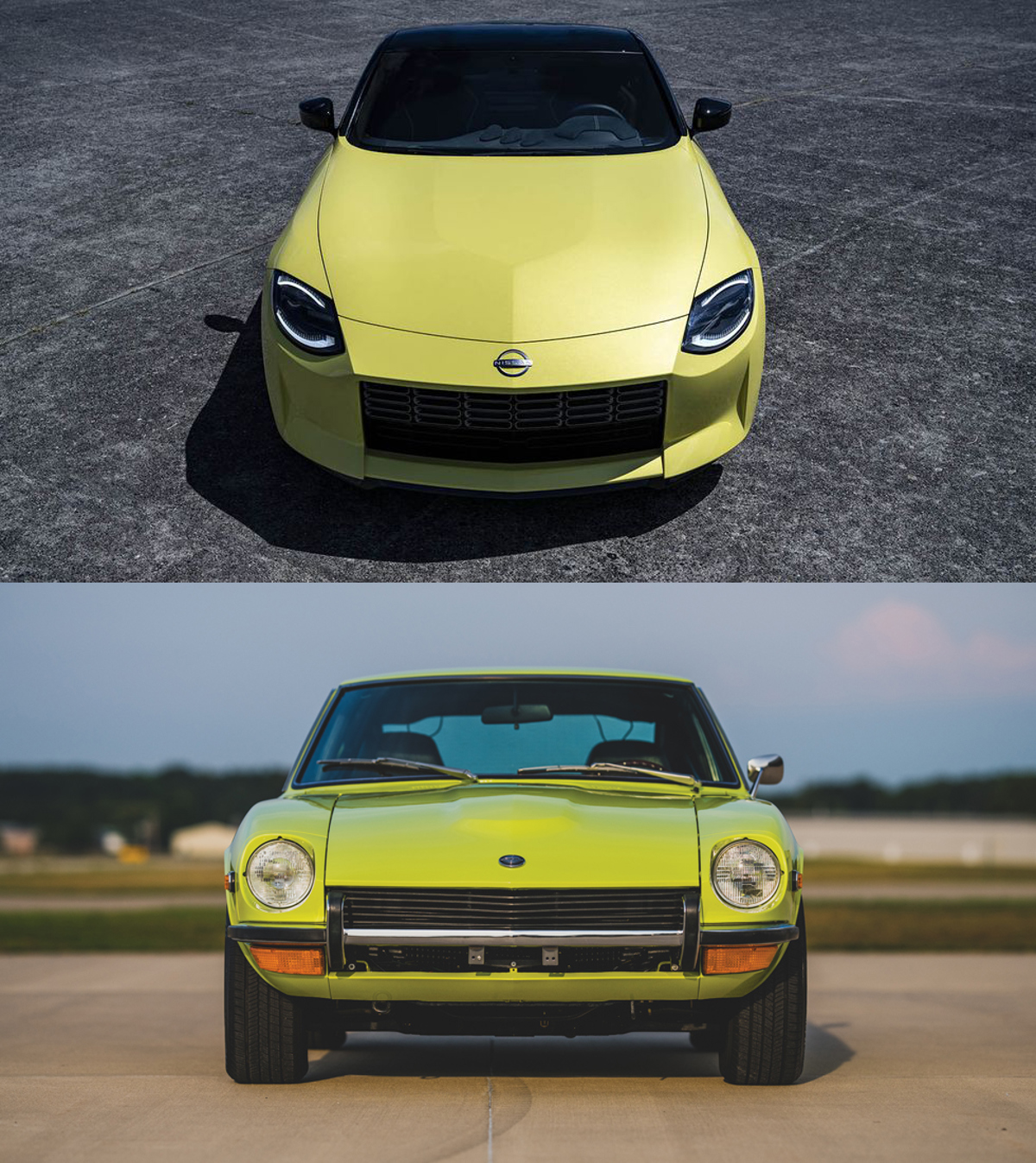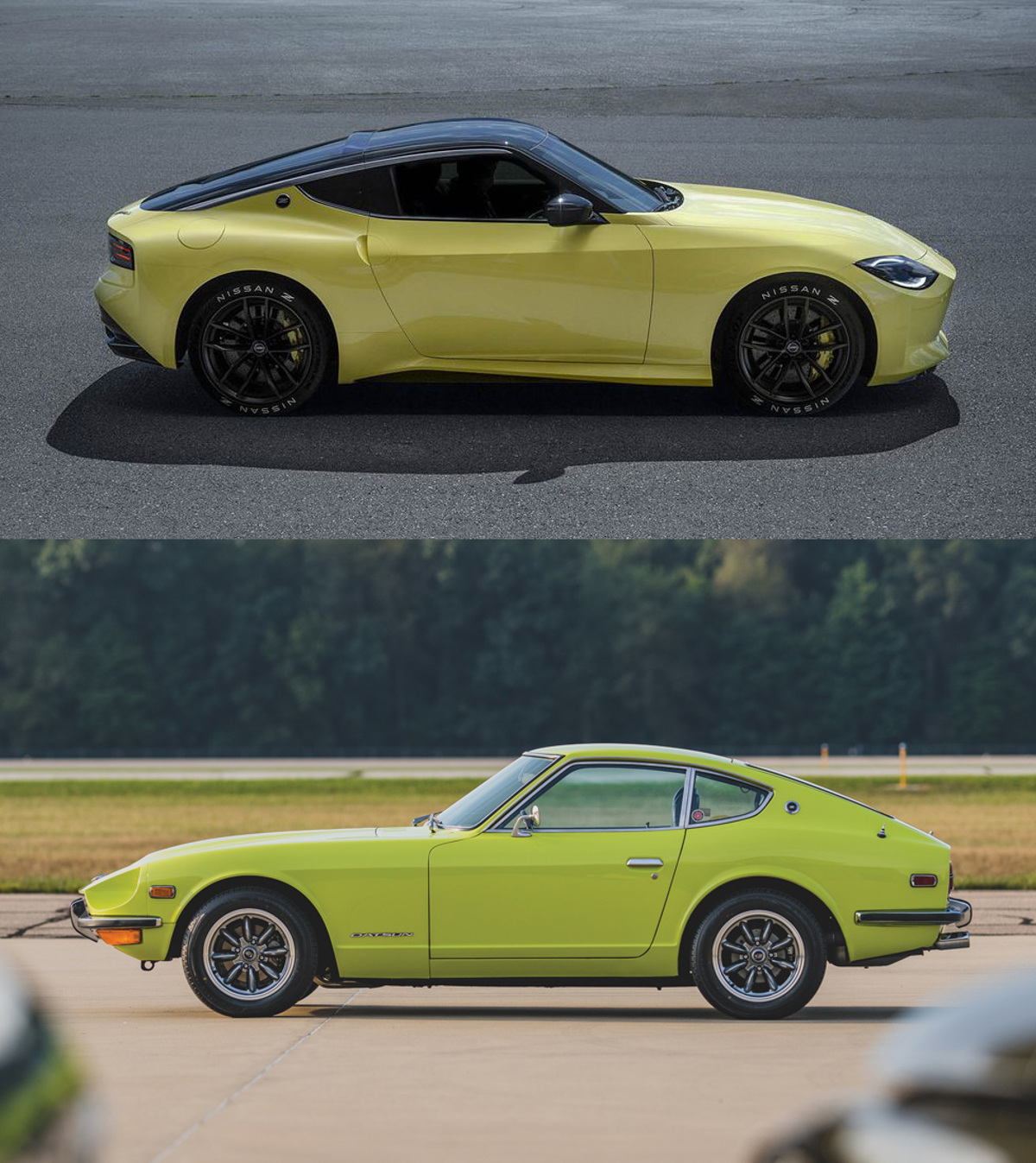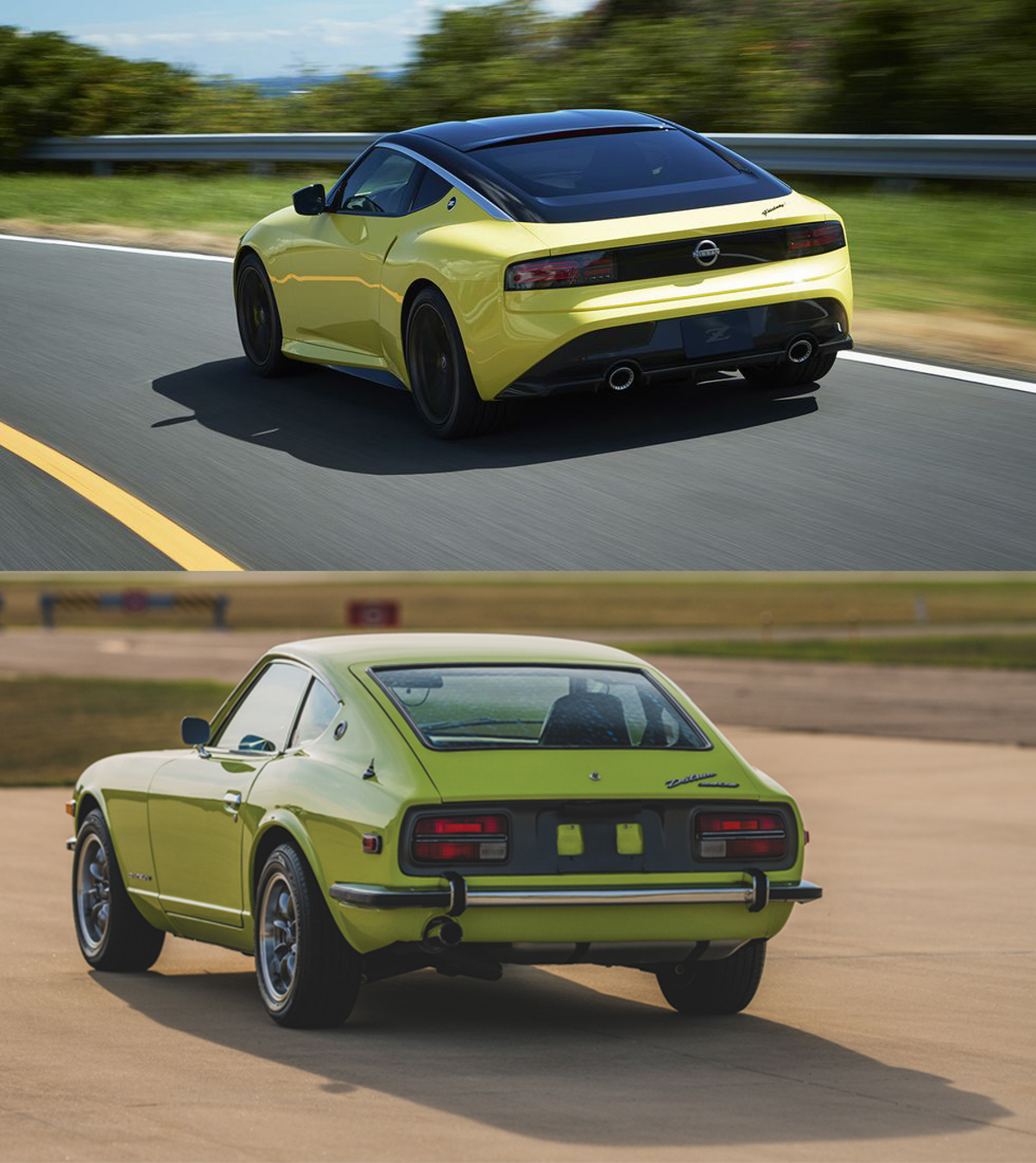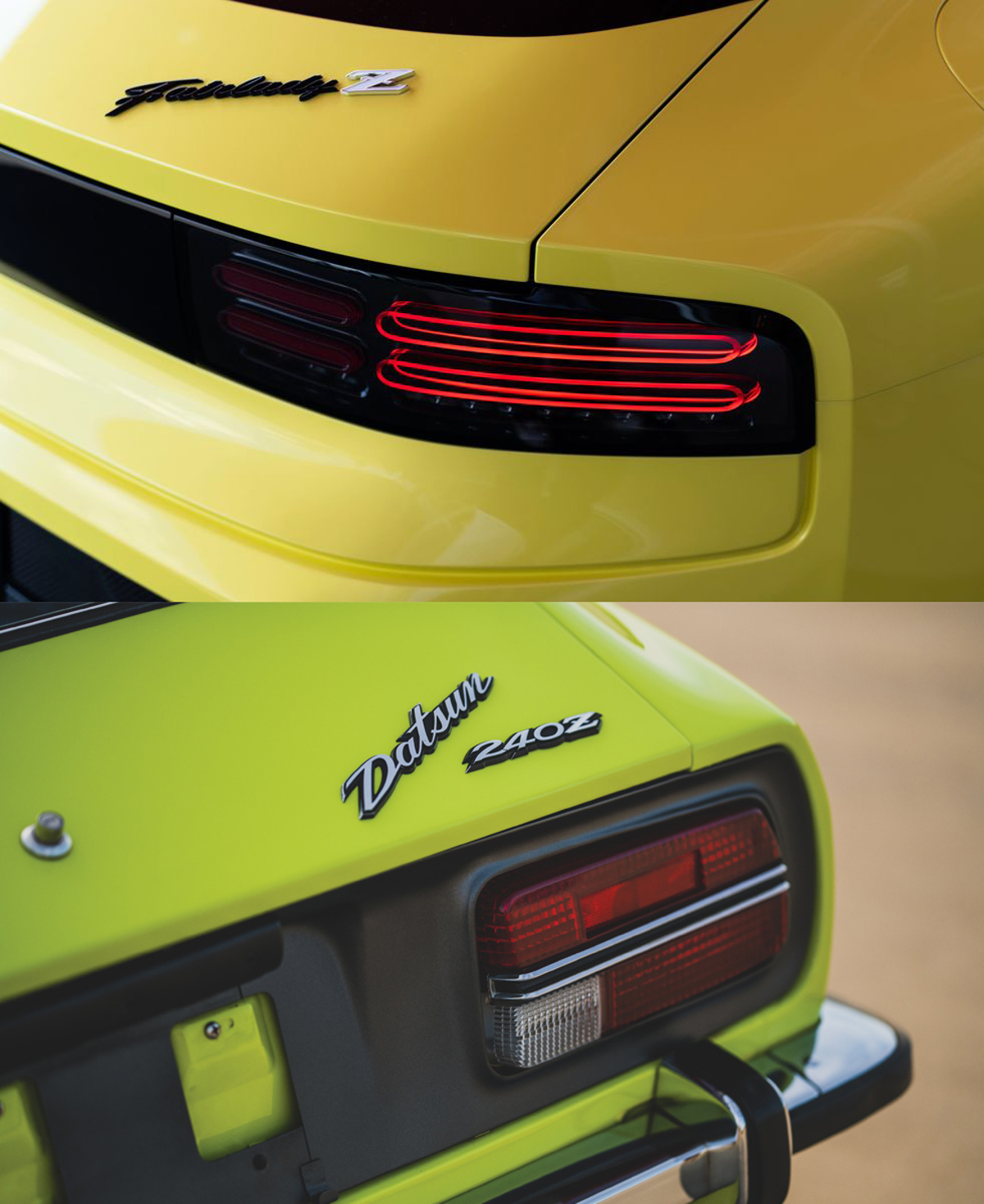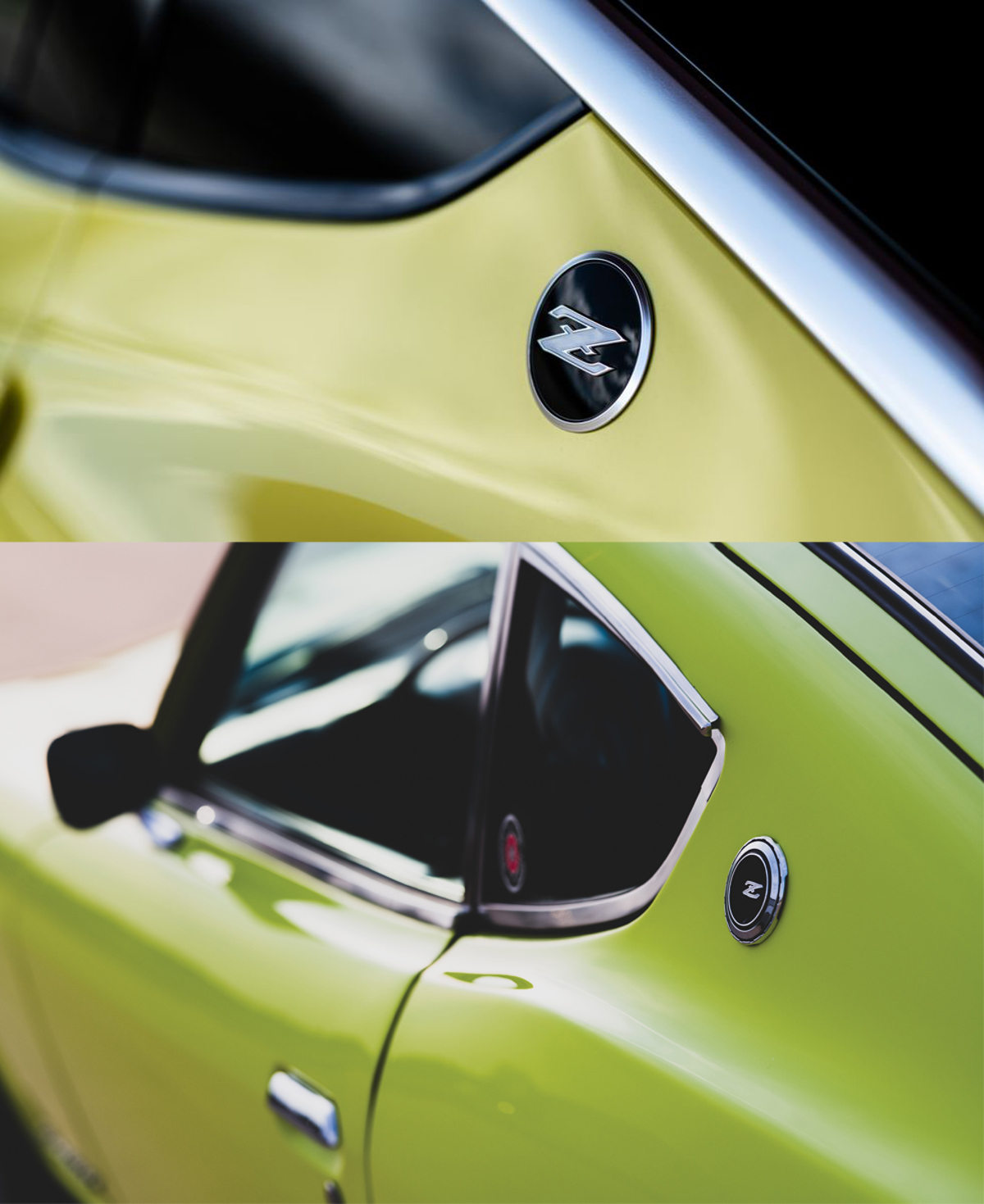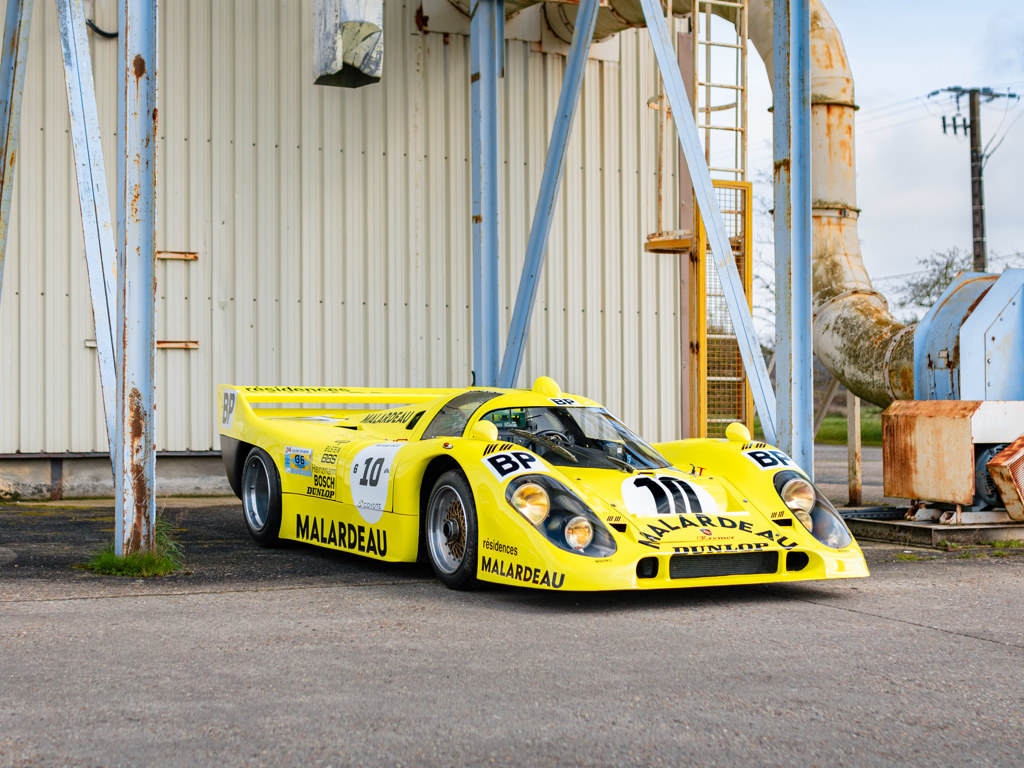When the brightly hued Nissan Z Proto made its online debut last week, the typically cynical automotive critics were surprisingly positive about the brand’s modern take on their classic Z car formula. For any new model trying to fit into the lineage of a beloved sports car, comparing the freshest release to the original is usually the ultimate test of whether the design has truly moved forward or merely been facelifted. Thankfully, as part of the extensive Elkhart Collection, RM Sotheby’s has a pristine 1972 Datsun 240Z, its original Lime paint recently restored, that will serve as the perfect comparison:
1972 Datsun 240Z
Estimate: $75,000 - $90,000 USD | Offered Without Reserve
Face Forward
We’ve done our level best to match the Proto’s press renderings from Nissan with photographs of the Datsun from Elkhart. Even though these two head-on images are taken at slightly different angles, you can see how the new concept has borrowed (and refined) the lines of the original, down to the bulge in the hood for greater engine clearance. Perhaps the Proto’s most controversial design feature is the large air intake at the front, but, if you look at the Datsun’s grille and imagine it sans-bumper, the shape you would be left with resembles the Proto’s stark, rectangular opening.
Different Sides
In the five decades since this Datsun first debuted, the technology involved in automotive construction has become visibly better—instead of round headlights inset into a diamond-shaped cutout, the new Proto has diamond-shaped lights with a circular LED graphic inside. The Proto’s door handles are inset as well for aerodynamics, and the front and rear bumpers have been integrated underneath the bumper covers. The overhang on the back of the original Datsun has been softened in the Proto, allowing more cabin room. Because of safety regulations, the new concept could never match the subtle A-pillars of the original. Still, the sharp, “sports car” silhouette from the original remains.
Rear Window
Generally regarded as the best angle of both the original Datsun Z and perhaps not coincidentally the new Nissan Proto as well, the rear three-quarter angle is where this classic sports car design coalesces. The best designs are always the most elemental, and this is the view that showcases the few, yet strong lines that crafted the original—one line for the floor, a muscular character line right below the door handle, one just above that, creating the rear haunches, and then a final line, swooping up to include a wide greenhouse, then falling back down gracefully to make the hatchback/trunk. Though the rear three-quarter angle is celebrated in both versions, we can see how the new design is a bit less-defined in light of the crispness of the original.
Details, Details
Again and again, the surprising thing about this design comparison has been how the original Datsun Z’s detailing appears ahead of its time. Note the matte black paint surrounding the taillights—a feature we see today on supercars. The new Proto’s lights are as much of a callback to a different Z-car—the fourth-generation Nissan 300ZX. Z-car aficionados will note the “Fairlady Z” script on the back of the new Proto, signifying the model’s original name in Japan. Sadly, the moniker was dropped when the 240Z was imported to the US starting in 1972.
Badge Engineering
Sometimes, a common point—like the “Z” badges on both the C-pillars of old and new Nissan sports cars—can help put the whole design into perspective. Thanks to the advances of modern manufacturing, the new Nissan Proto is smooth and well-resolved, deftly hiding its safety features with a mostly blacked-out greenhouse. While the original Datsun 240Z is a bit more upright, its design succeeds still today because of how well the essential proportions work. And though the brand-new Proto appears ready-for-production, it may be years before the first finished car rolls off the line. If what you really want is a classic sports car that is available in a reasonable timeframe, you can always place a bid on this lovely Lime-colored Datsun.


